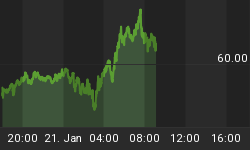September 10, 2009
The U.S. Dollar lost ground against all major currencies as record low U.S. interest rates encouraged the selling of the Dollar and the buying of higher yielding assets. Overnight the Dollar firmed until a better than expected U.S. Weekly Initial Claims Report helped put in a top and set off a gradual decline throughout the day.
The Dollar was the recipient of additional selling pressure at about the midsession following a better than expected oil inventory report. Firm equity markets throughout the U.S. trading session were additional signs that investors were demanding higher yielding currencies.
Record low interest rates in the U.S. helped boost demand for the higher yielding EUR USD. Euro bulls are beginning to believe that the U.S. may be amongst the slowest nations to move its interest rates higher once the recovery begins.
Early this morning the Bank of England voted to leave its benchmark interest rate unchanged at 0.50% and its quantitative easing program untouched. Furthermore, the BoE also decided to leave the interest rate it pays on reserve bank deposits unchanged.
Last month the BoE shocked the markets by increasing the amount of funds available for its asset buyback program. Traders sold off the Pound for about a month as this was a sign that the economy was still in a perilous position. Since the BoE did not ask for additional funding today, investors saw this as a sign that the U.K. economy may be in a position to begin its recovery.
The USD CAD lost ground today despite efforts by traders to support this market throughout the day. Buyers finally threw in the towel after a rally in both equity and energy markets fueled a rally in the Canadian Dollar. Losses were limited; however, as traders are still expressing concerns that the Bank of Canada may take action to suppress the rise in the Canadian Dollar. The BoC is concerned that a rapid rise in the value of the Canadian Dollar will have a negative effect on Canadian economic growth.
The NZD USD recovered from earlier losses to finish higher. Overnight the Reserve Bank of New Zealand voted to leave interest rates unchanged at 2.5% and also warned that further rate cuts are possible because of the "patchy recovery" taking place. The firmer equity markets, however, helped turn this market around and erase earlier losses. The ability to recover from early selling pressure reflects both demand for higher yielding assets and investor confidence that New Zealand's economy will recover from economic weakness.
The RBNZ now believes that additional stimulus may be needed to fight rising unemployment. News that exports fell by the most in 58 years was evidence that the rapid rise in the currency is hurting foreign demand. This could limit the economic recovery and slow down the rate of appreciation in the currency.
News that Australian employers cut almost twice as many jobs as economists forecast helped to limit gains in the AUD USD early in the trading session, but a late rally in U.S. equity markets helped the Aussie recover and finish higher for the trading session.
This bearish news comes on top of a report earlier in the week that Aussie retail sales fell. Because of the weaker than expected economic reports, traders are now reducing bets that the Reserve Bank of Australia will hike interest rates in October. This could limit gains. This market is likely to break once the U.S. stock markets begin to show signs of weakness.















